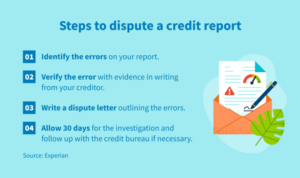With sustainable finance at the forefront, get ready to dive into a world where financial decisions meet environmental and social impact. From breaking down the basics to exploring real-life examples, this is the ultimate guide to understanding sustainable finance.
As we delve deeper, you’ll uncover the core principles, strategies, and impacts of sustainable finance, shedding light on its significance in shaping a more sustainable future.
Introduction to Sustainable Finance
Sustainable finance is all about making money moves that not only benefit our wallets but also the planet. It’s like financial planning with a green twist, focusing on investments that promote environmental sustainability and social responsibility. In today’s economy, where climate change and social inequalities are hot topics, sustainable finance plays a crucial role in driving positive change for the future.
Traditional finance, on the other hand, is all about making those dollars rain without necessarily considering the long-term impact on the environment or society. It’s more focused on short-term gains and profits, often overlooking the bigger picture.
Global Sustainable Finance Initiatives
- Green Bonds: These are bonds specifically issued to finance environmentally friendly projects like renewable energy or clean transportation.
- Impact Investing: Investing in companies or projects with the intention to generate positive social or environmental impact alongside financial return.
- Sustainable Development Goals (SDGs): A set of 17 global goals established by the United Nations to address critical challenges like poverty, inequality, and climate change. Sustainable finance aligns investments with these goals to drive positive change.
- Carbon Pricing: Implementing a price on carbon emissions to incentivize companies to reduce their carbon footprint. This helps in the transition to a low-carbon economy.
Principles of Sustainable Finance
Sustainable finance is guided by key principles that aim to integrate environmental, social, and governance (ESG) factors into financial decision-making processes. These principles help promote long-term sustainability and positive impact on society and the environment, in addition to financial returns.
Environmental Sustainability
Environmental sustainability focuses on incorporating ESG factors related to environmental impact into investment decisions. This includes assessing the climate risks, carbon footprint, and resource efficiency of companies and projects. By considering these factors, sustainable finance aims to support initiatives that contribute to a healthier planet.
Social Responsibility
Social responsibility emphasizes the importance of considering the social impact of investments. This involves evaluating factors such as labor practices, human rights, diversity, and community relations. Sustainable finance seeks to support businesses that prioritize social welfare and contribute positively to society.
Governance Practices
Governance practices highlight the significance of strong corporate governance and ethical business practices. This includes transparency, accountability, and fairness in decision-making processes. By promoting good governance, sustainable finance aims to enhance trust and integrity within the financial sector.
Comparison with Conventional Finance
In contrast to conventional financial practices that primarily focus on short-term profits, sustainable finance takes a more holistic approach by integrating ESG considerations. While conventional finance may overlook non-financial risks and impacts, sustainable finance recognizes the importance of long-term sustainability and responsible investing. By aligning financial goals with environmental and social objectives, sustainable finance contributes to a more resilient and inclusive economy.
Implementation of Sustainable Finance
Implementing sustainable finance involves integrating environmental, social, and governance (ESG) factors into investment decisions to promote long-term sustainable growth. This approach not only benefits the environment and society but also enhances financial performance. Let’s explore the strategies, challenges, opportunities, and case studies related to sustainable finance.
Strategies for Integrating Sustainable Finance
- Conducting ESG analysis: Evaluate companies based on their ESG performance to identify sustainable investment opportunities.
- Engaging with companies: Encourage companies to improve their ESG practices through dialogues, proxy voting, and shareholder resolutions.
- Impact investing: Invest in projects or companies that generate positive social and environmental impact alongside financial returns.
- Green bonds: Invest in bonds issued to finance projects with environmental benefits, such as renewable energy or energy-efficient buildings.
Challenges and Opportunities in Implementing Sustainable Finance Practices
- Challenges:
- Lack of standardized ESG metrics: Difficulty in comparing ESG performance across companies due to the absence of uniform reporting standards.
- Short-term focus: Overcoming the pressure for short-term returns and educating investors about the long-term benefits of sustainable finance.
- Opportunities:
- Market demand: Growing investor interest in sustainable investments creates opportunities for financial institutions to offer ESG products.
- Innovation: Encouraging innovation in sustainable technologies and practices through investment in green initiatives.
Case Studies of Organizations Successfully Incorporating Sustainable Finance
- Company A: Implemented ESG criteria in its investment process, resulting in improved risk management and long-term performance.
- Company B: Issued green bonds to fund renewable energy projects, attracting environmentally conscious investors and achieving positive social impact.
Impact of Sustainable Finance

Sustainable finance has a significant impact on both the environment and society, leading to positive outcomes and driving innovation and economic growth. However, there are also potential risks and limitations associated with this approach.
Positive Effects of Sustainable Finance
- Sustainable finance encourages businesses to adopt environmentally friendly practices, such as reducing carbon emissions and waste production.
- Investments in sustainable projects can lead to cleaner air, water, and land, benefiting both human health and biodiversity.
- By supporting social initiatives, sustainable finance can help address issues like poverty, inequality, and access to education and healthcare.
Potential Risks and Limitations of Sustainable Finance
- There is a risk of “greenwashing,” where companies falsely claim to be sustainable to attract investments without making real changes.
- Sustainable finance may not always prioritize the needs of marginalized communities or address systemic issues like climate justice.
- Regulatory challenges and lack of standardized reporting can hinder the effectiveness of sustainable finance initiatives.
Driving Innovation and Economic Growth
- Sustainable finance encourages the development of new technologies and business models that promote environmental and social sustainability.
- Investments in renewable energy, green infrastructure, and sustainable agriculture can create new job opportunities and stimulate economic growth.
- By integrating environmental and social factors into financial decision-making, sustainable finance can lead to more resilient and efficient markets.






